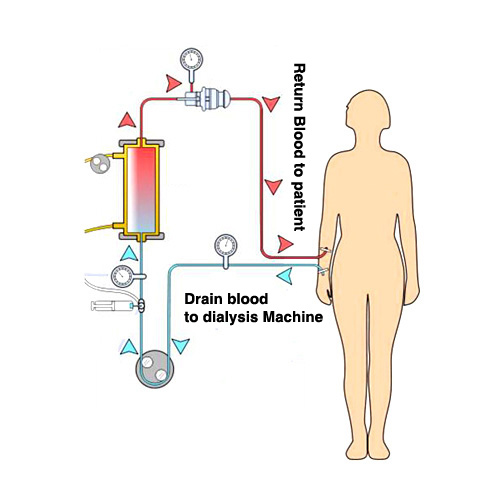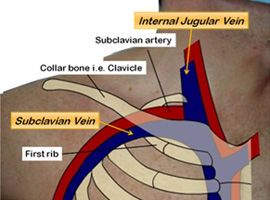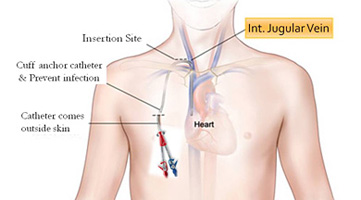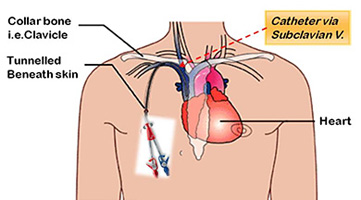
- Suite 1335, 13/F.,
Central Building,
1-3 Pedder Street,
Central, Hong Kong MTR
Central Station (Exit G) - 3104 0802

-
Suite 1335, 13/F.,
Central Building,
1-3 Pedder Street,
Central, Hong Kong MTR
Central Station (Exit G) - 3104 0802
- Home
- Haemodialysis

Haemodialysis
血液透析
Haemodialysis
Haemodialysis Access for Long-term Use
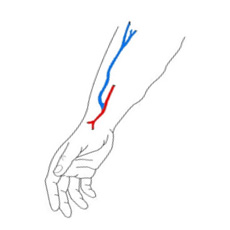
Arteriovenous fistula (AVF):
connect a superficial vein directly
to the artery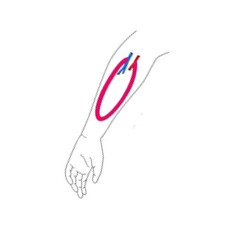
Arteriovenous Graft (AVG):
connect a vein indirectly through a piece of synthetic graft to an artery
Haemodialysis Access for Temporary Use

Central venous line via internal jugular vein

Central venous line via Subclavian vein
What is haemodialysis?
- When kidneys fail to work blood has to be cleaned by a process known as "haemodialysis" (HD). In HD, blood is taken to the artificial kidney for filtration of wastes and removal of excess fluid from the body. Cleaned blood is then pumped back to the bloodstream.
What is haemodialysis access?
- It is a passage to safely remove and return blood (vascular access) for haemodiaysis. A good access should maintain strong blood flow to provide adequate dialysis for 2 to 3 times a week. A durable access is a prerequisite for low long-term complication and good quality of life for patient with renal failure.
What are the options of haemodialysis access?
Most of the time renal failure is a chronic problem and requires long-term dialysis. Permanent access is therefore necessary. Among the two types of permanent access, arteriovenous fistula is preferred. Temporary access is good for short term dialysis or is for emergency situation before permanent access is ready for use.
Haemodialysis Access for Long-term use
Arteriovenous fistula (AVF):
connect a superficial vein directly to the artery

Upper-arm AVF

Forearm AVF
- Arteriovenous fistula is often constructed on an outpatient basis
- Ultrasound "mapping" helps to select the best veins for a fistula
- Under local anaesthesia, an arteriovenous fistula is made by directly connecting a superficial vein to an artery usually in the forearm
- After a few weeks of maturation, the vein becomes larger and stronger
- The strong arterial blood flow allow then for adequate dialysis
- Since the veins are close to the surface, the new access is easy to reach for repeated needle insertions
Arteriovenous Graft (AVG):
connect a vein indirectly through a piece of synthetic graft to an artery
- Arteriovenous grafts is formed through the indirect connection of the artery to a vein by a synthetic small flexible tube (Graft) under the skin.

Arterial Venous graft AVG
Care after haemodialysis Surgery
- A small amount of blood on the dressing, some bruising around the fistula incision site and a small amount of pain are not cause of concern
- Keep the wound dressing clean and dry until the wound healed to avoid infection
- Mild pain for a few days after operation and can be relieved with painkillers
- Rest your arm, the wound needs time to heal
- You can use your arm the same day as surgery, but do not lift anything heavy with your fistula arm for the first two weeks
- Watch out for sign of infection: hotness, redness or swelling around the fistula area
- Blood needs to flow smoothly through your AV fistula. Must not put extra pressure on the fistula
- Do not wear tight-fitting shirts, tight sleeves, watches, bracelets which may restrict the flow of blood through your fistula
- When carrying things (groceries, bags, luggage), make sure the straps or handles don't tighten around your fistula
- When sitting or sleeping, make certain that your head, pillow or cushion doesn't rest on your fistula
- Do not use your fistula arm to check blood pressure
After the wound healed
- It take several weeks for a new AV fistula to mature before it can be used for haemodialysis. Arm exercise such as squeezing a rubber ball in your hand can help your fistula to mature
- Proper hygiene is important, wash and pat dry your fistula arm
How to choose between the two types of permanent access?
- Arteriovenous fistula is the preferred vascular access, for following reasons:
- Veins and arteries are part of the body so a fistula is less prone to infections or blood clots than other types of access
- It self-heal after needle stick, so a fistula can last a long time
- Grafts are used when patients have small vein that cannot develop into a suitable fistula. Grafts are the second-best access. As graft is made of synthetic material with no natural defense, no anticoagulation nor healing power. Compared to a AVF, AVG is more likely to:
- Become infected
- Clotted
- Develop holes after needle punctures
Temporary Access
Permcath: a flexible tube inserted into a central vein, such as the internal jugular vein, or subclavian vein or femoral vein

Internal Jugular Vein

Subclavian Vein

Femoral vein
- Central venous catheters
- Catheters are flexible, hollow tubes which allow blood to flow in and out of your body.
- It is inserted under local anaesthesia into a "central" vein. The other end of the tubing is brought through a tunnel under the skin and used for hooking up to the dialysis machine.
- A catheter can be used right away for dialysis while waiting for a fistula or graft to mature.
- Catheters are therefore used as a temporary urgent access for a few weeks.
- The catheter is not an option for long term dialysis:
- It extends outside of the body, so it is prone to infection.
- Blood flow rates are often poor, and it is hard to get enough dialysis.
- Catheters are likely to clot.
- It can cause narrowing of the central vein and make the arm vessels impossible to be used for dialysis later.
-
Approach for the central vein catheterization
There are three common approaches for central vein catheterization:
- Subclavian vein (SV) lies just below the clavicle at the top of chest. It is the traditional approach
- Internal Jugular Vein (IJV) lies just above the clavicle at the base of the neck. It is the newer and the preferred approach
- Common femoral vein (FV) lies in the groin. Feasible but in an inconvenient position. It is the last approach
-
Catheter through the internal Jugular vein is the preferred approach
- IJV runs a straight course towards the right atrium. Mal-position is significantly less common with the jugular approach
- IJV vein is superficial, easily visualized with ultrasound. With the use of ultrasound to guide the needle puncture. Jugular approach has a much less risk of pneumothorax
- SV approach has a higher risk of puncture of an incompressible artery and bleeding is far more difficult to control
- SV is situated in between two bone (clavicle and rib), Long-term scissoring of the catheter inside the SV by the bones can damage the catheter (pinch off syndrome)
Indication for haemodialysis catheter
Advantage
- No lag-time; if need dialysis immediately and do not have time for a fistula to mature. A central venous catheter may be placed to begin dialysis. The patient will then have an AV fistula created and will remove the catheter once the fistula has matured and can be used for hemodialysis
- If the condition of the patient is poor and the heart cannot support the use of a fistula
- Suitable for very advanced age with poor haemodynamic reserve
- Run out of superficial vein of sufficient size and length for the creation of AVF
Disadvantage
- Incites central venous thrombosis and may preclude use of same arm for future dialysis
- Inconsistent blood flow for dialysis
- Infection and thrombosis







